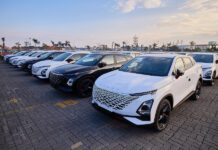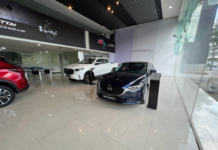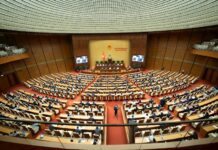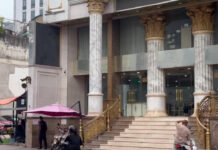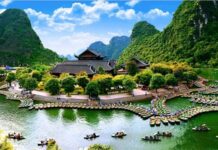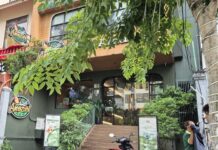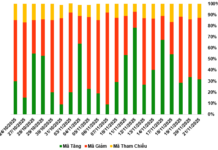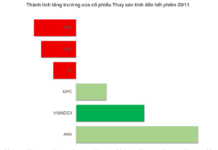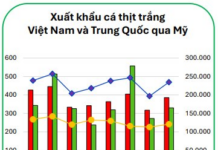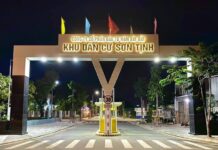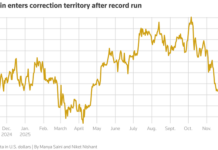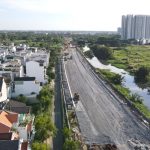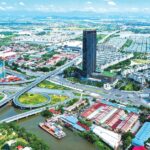Turning the Saigon River into a pillar of sustainable economic and tourism development
To become a global city, many suggest that Ho Chi Minh City (HCMC) must not only be the economic leader but also excel in infrastructure, with the Saigon River corridor connecting the HCMC region as its focal point. Do you agree with this statement?
HCMC is the economic powerhouse of Vietnam, not just a large city in terms of economy, culture, and society, but also a global urban center in Southeast Asia and Asia. We are building HCMC’s status as a global city, so planning for the city until 2030 and envisioning 2050 is of utmost importance. With a population of 17 million and aiming to be a top destination in the continent, transportation infrastructure plays a pivotal role in the city’s socioeconomic development.
Previously, when it came to planning HCMC, the focus was mainly on the inner city, the Saigon River, and, at most, Cat Lai Port. But now, we must view HCMC as a “river-bound, sea-oriented” city, and as an aquatic urban area, we must develop our port and waterway economy. While we already have international transshipment ports, we need to enhance the waterway transportation system along the Saigon River from Tay Ninh, through Cu Chi to Can Gio, and the network of canals and channels, forming a transportation network that connects inner HCMC, between HCMC and the Mekong Delta, and the Southeast region. This is an extremely important plan because HCMC’s economy must be linked to transportation, logistics, and tourism.
The tourism potential of the Saigon River has been untapped due to the lack of emphasis on regional linkage. Do you believe that the Saigon River should not only be the urban center but also become a pillar of sustainable economic and tourism development in the future?
I have been studying the Saigon River for 40-50 years. HCMC cannot do without the Saigon River as it is a distinctive feature and one of the rare rivers. The river flows from the northwest through Tay Ninh and into the city, meandering through Cu Chi and Thanh Da. It is rare to find a river like the Saigon River, which curves gracefully, forming a silk ribbon right in the middle of the city, creating a wonderful urban architectural space for HCMC.
Especially, the width of the Saigon River is not as wide as the Red River (Hanoi) but not too small either. The hydrological and geographical conditions give the Saigon River a calmer water surface than even the Seine in Paris, France. Thus, the Saigon River has become a very special symbol for HCMC, creating a romantic and poetic urban landscape. In my opinion, all planning should take into account the spatial axis of the landscape and transportation along the river corridor.
To create a breakthrough in the development plan for the Saigon River, we need to establish a large-scale tourism ecosystem, a gathering space for high-class cultural, sports, and ecological experiences, aiming for a global reach, such as developing marinas, world-class festivals, and building vibrant riverside urban areas.
Compared to cities with rivers flowing through their centers, such as Bangkok (Thailand), Shanghai (China), Paris (France), Phnom Penh (Cambodia), and even the Han River in Da Nang, the Saigon River has not been fully utilized to its potential. Do you think there is a need to add more inland wharves along the Saigon River, especially in the area through Cu Chi district, to develop high-class ecological, cultural, sports, and entertainment tourism?
I strongly agree with this perspective. In fact, the Seine in Paris is quite small and does not meander like the Saigon River; neither does it have the scenic beauty of the Huangpu River in Shanghai or the Han River in Seoul. Thus, regardless of the plan, HCMC should always make the Saigon River the focal point of economic, infrastructure, and especially tourism development.
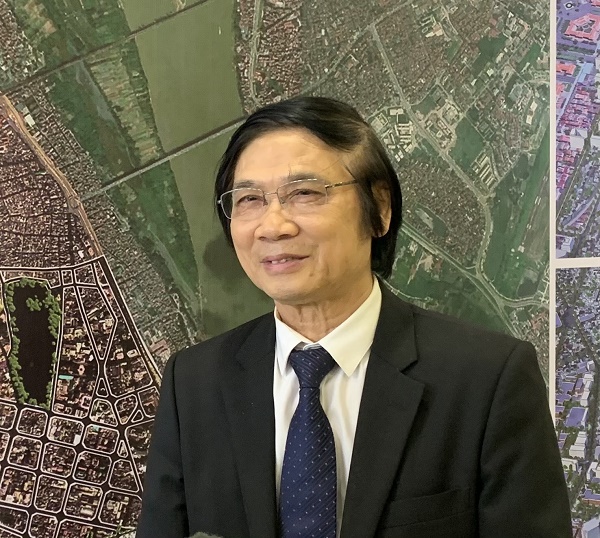
KTS Tran Ngoc Chinh, former Deputy Minister of Construction and Chairman of the Vietnam Urban Planning and Development Association.
In addition to the scenery along the riverbanks, there should be river tourism, and this river tourism should be connected to nearby regions and destinations, such as Cu Chi or Nui Ba Den in Tay Ninh. Therefore, we need to plan for numerous wharves and piers.
Apart from exploiting waterway transportation, the Saigon River, at night, must also become a tourist river, similar to what Shanghai has done with the Huangpu River. Recently, HCMC has launched a river festival, and I believe this should continue with more diverse forms and larger scales along the provinces through which the Saigon River flows. In parallel, we need to develop a system of marinas and bustling centers on both riverbanks to promote riverine economic development in the entire region.
HCMC – Tay Ninh is an essential international development axis for the region
To harness the internal strength of the Saigon River along its flow from Tay Ninh through Cu Chi to central HCMC, it is necessary to add a riverside avenue with a scale of 4-10 lanes and combine it with urban railways connecting to Nui Ba Den, Tay Ninh, to ensure inter-regional connection for both economic development and tourism promotion. What are your thoughts on this proposal?
I believe that the development of waterway transportation must go hand in hand with the construction of land transportation systems. Sometimes the road runs along the river, and sometimes it deviates a bit, depending on the landscape, to ensure a close and harmonious connection. The HCMC-Tay Ninh axis needs attention because it is not just a cultural and tourism axis but also combines economic exploitation with the Moc Bai border gate. Looking ahead, when the central land fund in HCMC is exhausted, the city will also need to expand its satellite cities to Tay Ninh.
The planning of the two riverbanks from HCMC through Cu Chi to Tay Ninh must include roads with a scale of 4-10 lanes. When we look at other countries, we see that they pay great attention to transportation. Their roads are not just 2 lanes but 4-10 lanes. Therefore, when planning the avenue, we must consider meeting future high demands. This is not just about exploiting the Saigon River’s water surface but also about all the transportation systems along and perpendicular to the river, which must be included in the infrastructure plan. These factors need to be calculated very specifically.
As you mentioned, HCMC has a special relationship with Tay Ninh province, especially the international road connection through the Moc Bai border gate and the famous Ba Den Mountain tourist destination in Southeast Vietnam. How should we plan the development of this economic and tourism axis, in your opinion?
I have also proposed to HCMC regarding this matter. For Tay Ninh, in addition to HCMC connecting to the Moc Bai international border gate, it is necessary to continue to develop to Tay Ninh City, the Ba Den Mountain area, and to Hoa Lu and Xa Mat border gates. In connection with this area, Cambodia is also developing connections with its entire transportation system. I believe that the axis from HCMC through Cu Chi – Trang Bang – Hoa Thanh – Tay Ninh – Xa Mat is a very important international axis connecting HCMC and Tay Ninh.
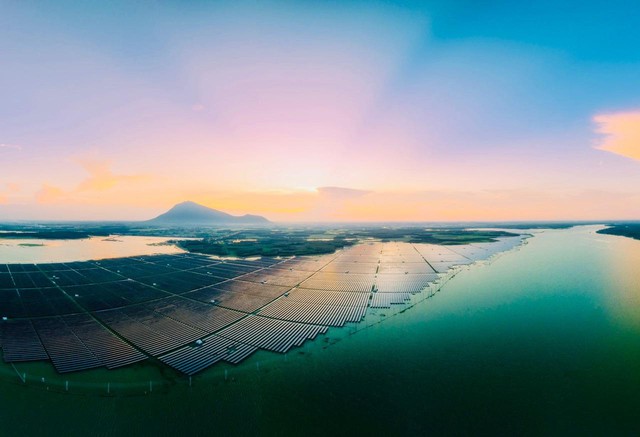
The connection from HCMC – Cu Chi – Nui Ba Den – Tay Ninh will create a vibrant “above the wharf, below the boat” space for the Saigon River corridor.
If this economic axis is implemented, it will solve transportation and logistics issues and organize the residential population, forming an inter-regional ecological tourism chain, facilitating Tay Ninh’s development. This axis also passes through Ba Den Mountain, the rooftop of the Southeast region. People in HCMC and tourists visiting the city also love to go to Ba Den Mountain as it is a famous spiritual destination, known for its pleasant climate and natural beauty. Therefore, this axis is not only an international economic linkage axis but also needs to be the “backbone” of HCMC’s tourism. When developing a high-class tourism infrastructure and modern transportation system, including rivers, roads, and railways, connecting HCMC – Cu Chi – Ba Den Mountain – Tay Ninh, it will create a vibrant “above the wharf, below the boat” space for the Saigon River corridor, similar to the successful models of major cities around the world.
To achieve the grand goals in transportation infrastructure and tourism development, capital is an important factor to consider. How do you assess the role of socialized capital, especially from capable and experienced corporations and investors, in HCMC’s future development?
Not only in Vietnam but also in any country, to develop, we must combine state capital, socialized capital, including FDI, and land fund. The land fund is the state’s capital, so developing HCMC, I think, is both difficult and not difficult. For the state to develop, it must invest in infrastructure and set aside land funds for that development.
Socialized investment enterprises will invest where they have the capacity. I think that for HCMC, the direction of socialized investment is not difficult. HCMC is a dynamic market, so it is very attractive in the eyes of local enterprises and large corporations from the North. Currently, the National Assembly has also given HCMC special policies to attract investment. The issue is that HCMC must be determined to implement, balancing state and business interests to attract them to develop together and optimize the experience and resources of large domestic corporations.
Thank you for your insights!
A central government-controlled city collects over 10,000 billion VND in budget in just 1 month
Only in January 2024, the total state budget revenue within the city reached VND 10,763.7 billion, equivalent to 142.1% compared to the same period.


